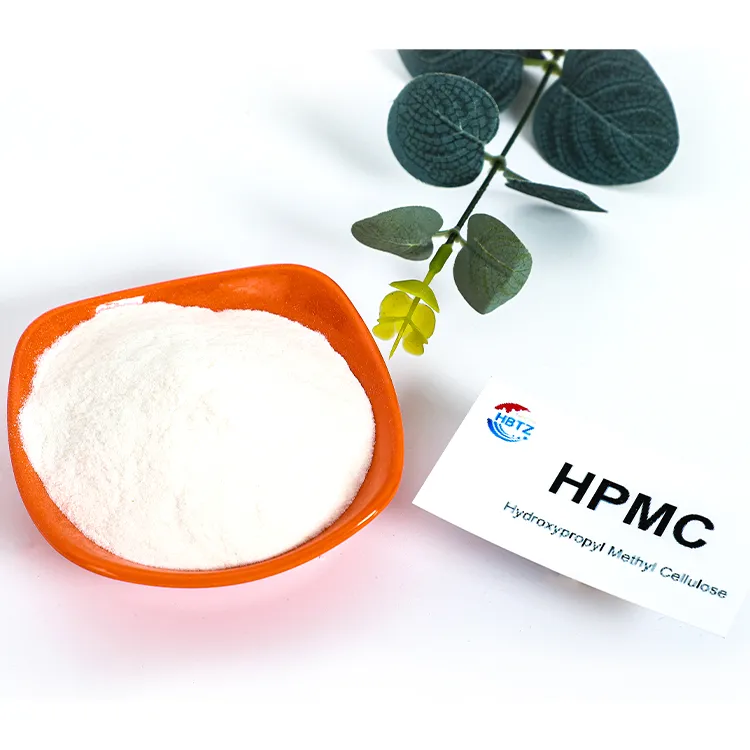
Hydroxypropyl Methyl Cellulose - Hebei Tangzhi Technology Co., Ltd.|Construction, Pharmaceuticals, Food Industry
Introduction to Hydroxypropyl Methyl Cellulose (HPMC)
Hydroxypropyl Methyl Cellulose (HPMC), also known as CAS 9004-65-3, is a semi-synthetic, non-toxic, and biodegradable polymer derived from cellulose. This versatile material serves as a thickener, stabilizer, and film-forming agent across various industries, including construction, pharmaceuticals, food, and cosmetics. Its unique chemical structure, which combines hydroxypropyl and methyl groups, grants it exceptional solubility, viscosity control, and thermal stability.


Key Features and Functional Benefits
HPMC’s widespread adoption stems from its remarkable functional properties, which address critical challenges in industrial applications:
- Viscosity Control: HPMC can be tailored to achieve precise viscosity levels, making it ideal for coatings, adhesives, and personal care products.
- Water Retention: Its ability to retain moisture enhances the workability of cementitious materials in construction, reducing cracking and improving durability.
- Thermal Stability: HPMC maintains its integrity under varying temperature conditions, ensuring consistent performance in pharmaceutical formulations and food processing.
- Biocompatibility: Free from toxic byproducts, HPMC is safe for use in medical devices, drug delivery systems, and food additives.
- Environmental Friendliness: As a biodegradable polymer, HPMC aligns with global sustainability goals, minimizing ecological impact.
According to NIST (National Institute of Standards and Technology), "HPMC’s chemical stability and adaptability make it a cornerstone in advanced material science, particularly in applications requiring precise rheological properties."
Technical Specifications
| Parameter | Specification |
|---|---|
| Chemical Formula | C₃₆H₇₆O₂₈ |
| Molecular Weight | Approx. 4,000–100,000 g/mol |
| Viscosity Range | 10–200,000 mPa·s (depending on grade) |
| Water Solubility | Highly soluble in cold water; insoluble in organic solvents |
| Thermal Stability | Stable up to 150°C |
| pH Range | 4.0–10.0 |
| Appearance | White to off-white powder |
Applications Across Industries
1. Construction Industry
HPMC is a critical component in mortar, plaster, and tile adhesives. Its water-retention properties improve the adhesion and workability of cement-based materials, reducing the risk of cracking and enhancing structural integrity. NIST research highlights HPMC’s role in optimizing the performance of sustainable construction materials.
2. Pharmaceuticals
In drug formulation, HPMC acts as a binder, disintegrant, and controlled-release agent. It ensures uniform drug distribution and prolongs the efficacy of tablets and capsules. For example, NIST standards for pharmaceutical excipients emphasize the importance of polymers like HPMC in maintaining dosage accuracy.
3. Food Industry
HPMC functions as a thickener, emulsifier, and stabilizer in food products such as sauces, dairy alternatives, and baked goods. Its non-GMO and allergen-free properties make it a preferred choice for health-conscious consumers.
4. Cosmetics and Personal Care
HPMC is used in lotions, shampoos, and toothpaste to enhance texture, stability, and shelf life. Its ability to form protective films on the skin and hair improves product performance.
Company Background: Hebei Tangzhi Technology Co., Ltd.
Founded in Hebei Tangzhi Technology Co., Ltd., a leading manufacturer of cellulose derivatives in China, the company specializes in producing high-purity HPMC for global markets. With over a decade of expertise, Tangzhi Technology combines advanced R&D capabilities with rigorous quality control to deliver products that meet international standards.
As a hpmc supplier, Tangzhi Technology offers customized solutions for industries requiring precision and consistency. Their commitment to innovation is reflected in their state-of-the-art production facilities and adherence to NIST guidelines for material testing and safety.
Why Choose Hebei Tangzhi Technology?
- Quality Assurance: All HPMC products undergo strict testing to ensure compliance with ISO and ASTM standards.
- Competitive Pricing: As a hpmc price leader, Tangzhi Technology offers cost-effective solutions without compromising on quality.
- Global Reach: With a network spanning Asia, Europe, and North America, the company ensures timely delivery and localized support.
- Sustainability: Tangzhi Technology prioritizes eco-friendly practices, including energy-efficient production and waste reduction.
Conclusion
Hydroxypropyl Methyl Cellulose (HPMC) is a transformative material that bridges the gap between industrial demands and environmental responsibility. Through its multifunctional properties, HPMC continues to drive innovation in construction, healthcare, food, and beyond. Hebei Tangzhi Technology Co., Ltd. stands at the forefront of this advancement, offering reliable, high-performance solutions for a diverse range of applications.
For more information about HPMC suppliers or to buy HPMC, visit Hebei Tangzhi Technology Co., Ltd..
References
National Institute of Standards and Technology (NIST). (n.d.). Materials Research and Standards. Retrieved from https://www.nist.gov
Hebei Tangzhi Technology Co., Ltd.. (n.d.). Hydroxypropyl Methyl Cellulose (HPMC) Specifications. Retrieved from https://www.tangzhihpmc.com/hydroxypropyl-methyl-cellulose-hpmc.html
-
Reliable Powdered Cellulose Supplier: Quality, Sustainability & InnovationNewsNov.24,2025
-
Find Trusted Microfibrillated Cellulose Suppliers for Sustainable Industrial SolutionsNewsNov.24,2025
-
Leading Methocel Suppliers: Quality, Innovation & Sustainability in Methylcellulose SupplyNewsNov.23,2025
-
Reliable Hydroxyethylcellulose Suppliers for Industry & Sustainability | Tangzhi HPMCNewsNov.23,2025
-
Top Ethyl Cellulose Supplier – Quality, Sustainability, and Industrial SupportNewsNov.23,2025
-
Trusted CMC Powder Suppliers for Food, Pharma & Industrial Use | Tangzhi HPMCNewsNov.22,2025





















